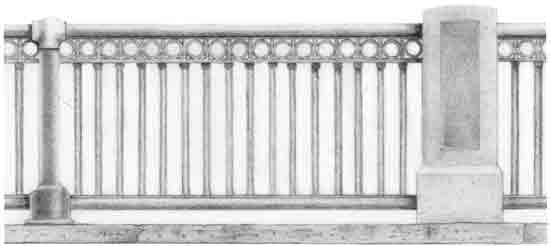|
HISTORIC HIGHWAY BRIDGES OF OREGON
|

|
PHOTOGRAPHY CREDITS
Josephine County Historical Society
Fig. 7.
Jef Kaiser p. 209.
Roger Keiffer Fig. 14.
Craig Markham James Norman
ODOT Bridge Section Collection ODOT Photography Lab Files
Fig. 2b; pp. 61, 91, 94, 102, 108,
109, 212, 276, 276b, 277a, 282,
284a, 285, 286, 287b, 288b, 299b.
Fig. 2c, Fig. 10, Fig. 16, Fig. 18a, Fig.
19, Fig. 22, Fig. 25; pp. 59, 60, 63,
64, 65, 66, 67, 70, 71, 72, 73, 74, 75,
76, 77, 78, 80, 81, 83, 84, 85, 88, 90,
92, 93, 96, 98, 103, 104,105,106,
110, 113, 115, 116, 117, 118, 122,
123, 124, 125, 128, 129, 130, 131,
137, 138, 139, 140, 141, 142, 143,
144, 145, 146, 148, 150, 151, 152,
153, 154,155, 157, 160, 164, 165,
166, 167, 168, 169, 170, 171, 172,
173, 174, 175, 176, 177, 178, 179,
180,181,182,183, 184, 185, 186,
187, 188, 189, 190, 191, 192, 193,
194, 195, 196, 197, 198, 199, 200,
201, 202, 203, 204, 205, 207, 208,
214, 215, 221, 269, 270, 271, 282,
273a, 274, 275b, 278a, 279, 280,
281a, 287a, 289, 290, 291, 292, 293,
294, 295, 297, 298, 299a, 300a.
Fig. 5, Fig. 6, Fig. 9, Fig. 11, Fig. 13, Fig. 17, Fig. 24, p. 220.
Fig. 1, Fig. 12; pp. 111, 120.
John Preston p. 281b.
Jerry Robertson Dwight Smith
Murray Stone
Fig. 2a, Fig. 4, Fig. 18; pp. 62, 68, 82, 100, 101, 107, 119, 210, 213,
300b.
Fig. 18d; pp. 69, 79, 89, 97, 99, 126,
127, 135,136,147,156,158,159,
273b, 275a, 276a, 277b, 278b, 284b,
288a.
p. 211.
The photographs in this document are the property of the Oregon Department of Transportation with one exception. The early Rogue River Bridge photo (Figure 7) was furnished courtesy of the Josephine County Historical Society.

Cape Creek Bridge (1931), Oregon Coast Highway, Heceta Head, Lane County
NOTE ON THE DIVIDERS
The major sections of this document are divided by drawings of early bridge railing designs in Oregon from the turn of the century to the late 1930s. In addition to being functional, bridge railings provide an opportunity for adding artistic treatment to structures and contribute to the aesthetic appeal of structures. In some cases, the railing is the only feature of a bridge readily seen by the traveler and often only in a brief glimpse during the crossing. Railing designs have changed over time, in conjunction with changes in bridge technology, materials, styles, taste, and safety. Some designs were created specifically for one bridge, while others were standardized and used on hundreds of bridges. (Drawings by George Kraus, ODOT.)
| <<< Previous | <<< Contents>>> |
credits.htm
Last Updated: 06-Aug-2008